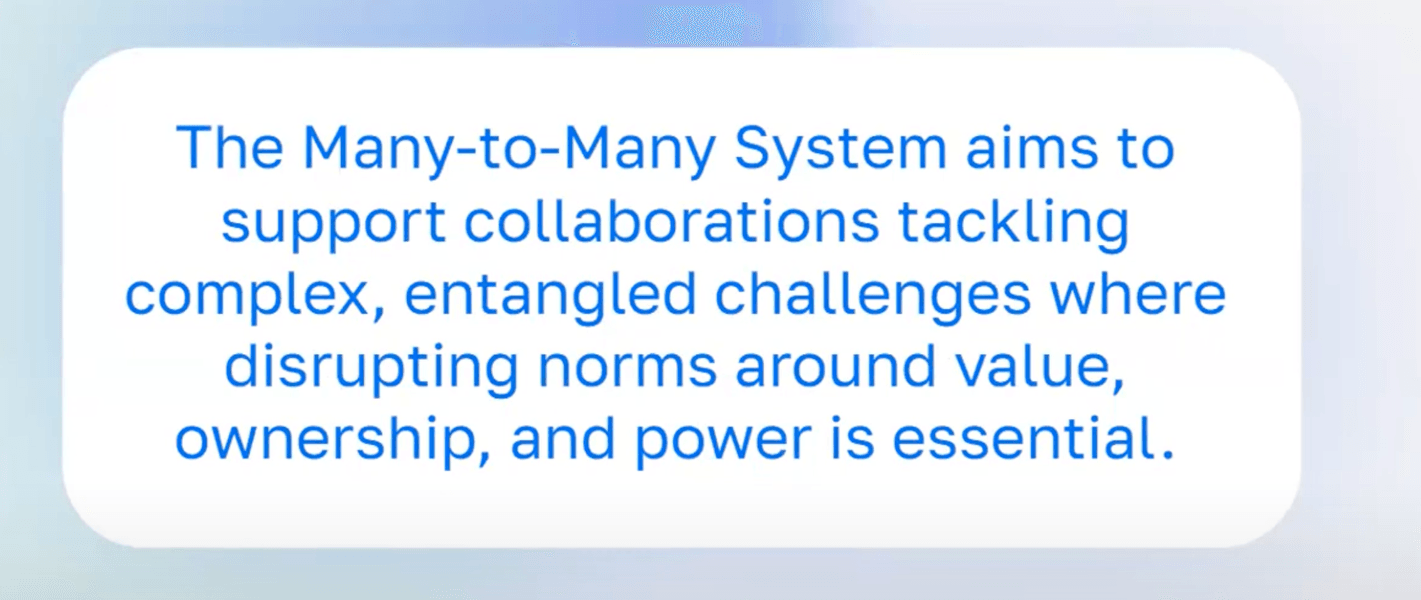Systems thinking and change

Me gustaría un debate público sobre esto
Reflecting on the mission of the many to many system that was just lunched some days ago.
Están de acuerdo que disrupting norms around value and ownership and power in ABSOLUTLY neccesary for systems change?
Great work by
Hazel Henderson, lifelong futurist, author, and environmental thought leader - Hazel Henderson
hazelhenderson.com
Courses and Programs | System Dynamics | MIT Sloan
mitsloan.mit.edu
Systems thinking: the key to solving interconnected crises
clubofrome.org
The Cabrera Lab Podcast
youtube.com
HOME | Systems Thinking Standards Institute
stsi.pro
Celebrating systems thinking through student projects
blog.kumu.io
Buenos ejemplos de mapas
Systemic Design Association Home
systemic-design.org
Scaling Deep Evaluation & Funding Inquiry — The Systems Sanctuary
systemsanctuary.com